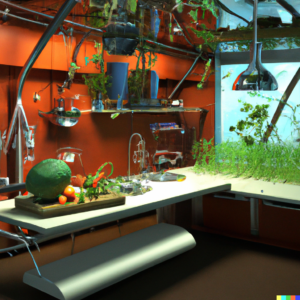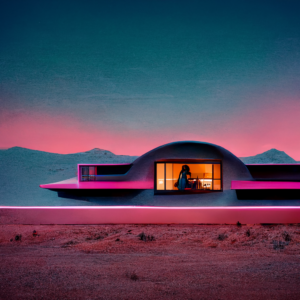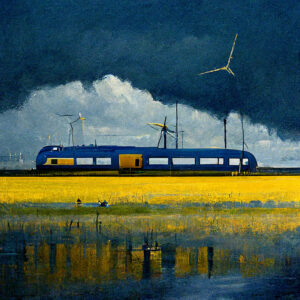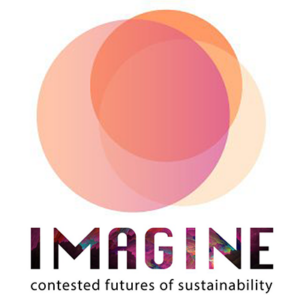See more about IMAGINE and the Imaginaries Lab intro page for the project
Project brief for TU Eindhoven, DCM100 Constructive Design Research, autumn 2022
Title: Imagine: Contested Futures of Sustainability
Researchers: Dan Lockton (TU/e)
with Marie Hebrok, Nenad Pavel, Henry Mainsah, James Lowley, Jo Cramer, Heidi Dahlsveen, Niels Peter Underland (Oslo Metropolitan University)
Keywords: futures, speculative design, climate, sustainability, imaginaries
When you think about ‘the future’, what do you imagine?
How do you imagine how you might eat, dress, and travel in the years ahead?
Where do those ideas come from—and what effect do they have on how you design?
The IMAGINE project explores these ‘imaginaries’ of futures, and how they intersect with ideas of ‘sustainability’ in an age of climate crisis, with specific focus on the social practices of eating, dressing, and moving in everyday life. Why are some of these ideas or visions (imaginaries) dominant in society, and others not? How much do ideas from popular media affect what people think? Who has the power over imaginaries—the power to shape how we imagine the future? What is agreed, and what is contested, and by whom? What is the role of critical questions around biodiversity, non-humans, different economic models, different ways of being?
As part of the project—a collaboration between researchers working on the sociology of consumption, design, fashion, theatre, and media—a range of imaginaries of different futures will be turned into forms in which they can be experienced through prototypes and performances. Making imaginaries tangible in this way will provoke and enable the politics, tensions, and contradictions inherent in these visions to be explored critically through discussion and debate with members of the public, policymakers, businesses, and other societal actors. The aim overall is to establish an interdisciplinary knowledge hub that will advance the theoretical and methodological approaches within the humanities, social sciences, design and arts towards scientific study of imaginaries.
This brief for the Q1 2022-23 Constructive Design Research course invites TU/e students to participate in exploring and creating experiences for IMAGINE, with the potential for your project to be exhibited at DOGA in Oslo in 2024 and indeed potentially used to provoke discussion with societal stakeholders. You will be working in parallel with a group of Master’s students in Oslo, with whom we’ll try to arrange some exchange of ideas.
As this is a research course, you will need to formulate a research question which can be investigated (if not ‘solved’) through your project. Although the three focuses of eating, dressing, and moving might seem like separate challenges, a wise choice might be into integrate them into a more connected vision of a possible future of everyday life, enabling you to make connections between practices in the experience you design. Although, you could choose to focus on one area.
The “showroom / field / lab” framework from Koskinen et al (2011), as used in the CDR course, does not necessarily (at first glance) sit perfectly with this project, but you can, nevertheless use it as a way to inspire and structure your design and research process. For example while the showroom approach might be an obvious match in terms of producing something which can be ultimately be exhibited, you still need this to be a research project—the process of designing that prototype or artefact (or experience) should address a question. A field approach might involve you designing something which you can ‘try out’ with people to investigate a question, maybe gathering input and ideas from real-world participants around how they imagine futures, to help create your vision. A lab approach might use something you design as a prompt or provocation in a more ‘controlled’ setting, perhaps with other design students as participants to derive some insights about how you and your peers—who, after all, will be, in time, turning visions of the future into reality through your work—relate to different imaginaries of futures and the issues around them. Note: the focus on imaginaries and imagination makes this not simply about futuring and foresight in the sense of prediction, but more about imagination.
Some relevant background reading
Dan Lockton and Stuart Candy (2019). A Vocabulary for Visions in Designing for Transitions. Cuadernos del Centro de Estudios de Diseño y Comunicación 73, 27–49. https://imaginari.es/publications/LocktonCandy_Cuadernos2018.pdf
Marie Hebrok and Henry Mainsah (2022). Skinny as a Bird: Design fiction as a vehicle for reflecting on food futures. Futures 141, 102983. https://imaginari.es/imagine-project/Hebrok_Mainsah_2022.pdf
Lenneke Kuijer (2020). Democratising and Anticipating Everyday Futures Through Critical Design: A Review of Exemplars. Temes de Disseny 36, 150–177. https://www.raco.cat/index.php/Temes/article/download/373852/467402
Geoff Mulgan (2020). The Imaginary Crisis (and how we might quicken social and public imagination). Report for Untitled, Demos Helsinki https://demoshelsinki.fi/wp-content/uploads/2020/04/the-imaginary-crisis-web.pdf
Ivica Mitrović, James Auger, Julian Hanna, and Ingi Helgason (2021). Beyond Speculative Design: Past – Present – Future. SpeculativeEdu. https://speculativeedu.eu/wp-content/uploads/2021/06/Beyond-Speculative-Design.pdf
Lots more possible readings (and of course videos), depending on the focus of your project .
Course learning goals
(taken verbatim from Canvas, TU/e login required)
‘Constructive Design Research’ is a form of design research “that imagines and builds new things and describes and explains these constructions” (Koskinen et al. 2011, p.6).
The goal of this course is to gain understanding and depth in ‘Constructive Design Research’ and related theories.
You will acquire:
– knowledge about one of three methodologies (Lab, Field or Showroom) to ‘Constructive Design Research’ by reading the relevant chapter and related articles and background research
– skills in ‘doing’ the approach (constructing the ‘research question’ in relation to the research prototypes, gathering and analyzing data, presenting the insights from your research in an exhibition and final presentation, applying the theories to the research design)
– competence in ‘doing’ the approach (organizing the specific research through design approach with an attitude that fits the approach)Next to your chosen approach you will gain awareness about the other two approaches through the course, informal discussions and the final group presentations and discussion.
Additional Goals:
– gain awareness about the research being done at the department of ID (past, present, future of research at ID, research groups, researchers, research topics, methodologies)
– gain understanding about research group Future Everyday or Systemic Change (research topics, researchers and publications)
-understand how design research plays a role in your professional identity as a designer
The above images were generated using DALL-E 2 and Midjourney in September 2022.
Back to the Imaginaries Lab intro page for the IMAGINE project




